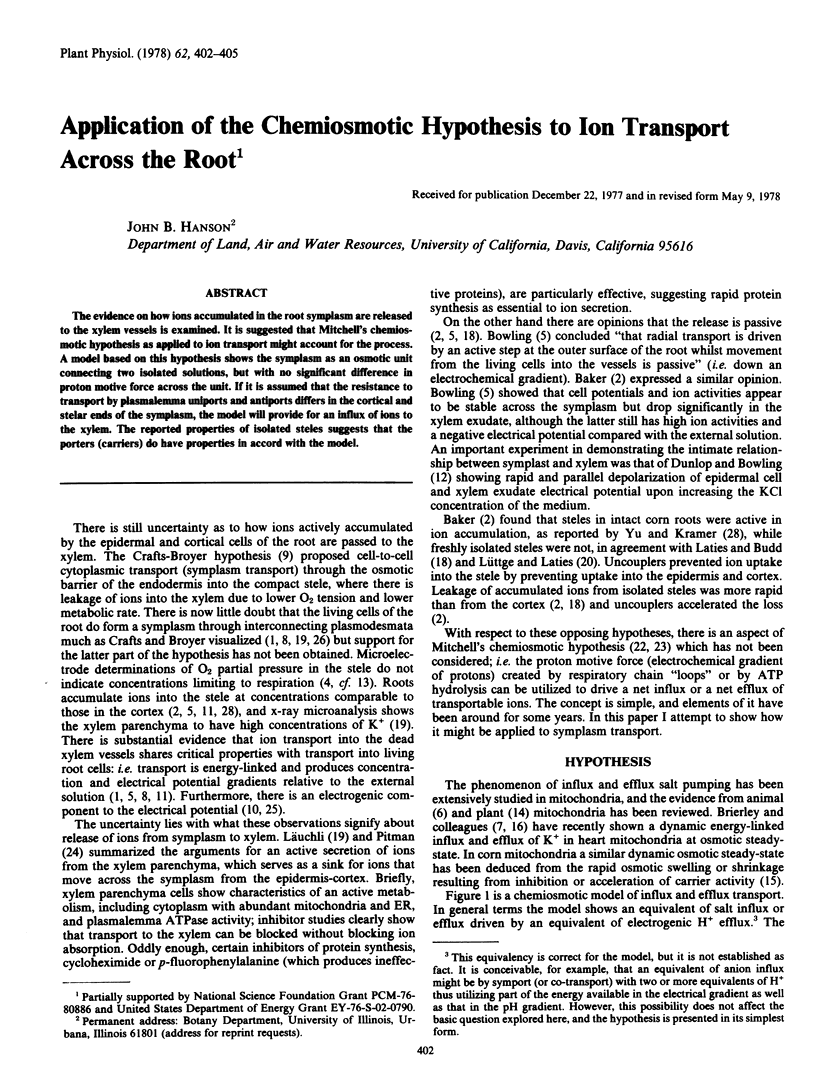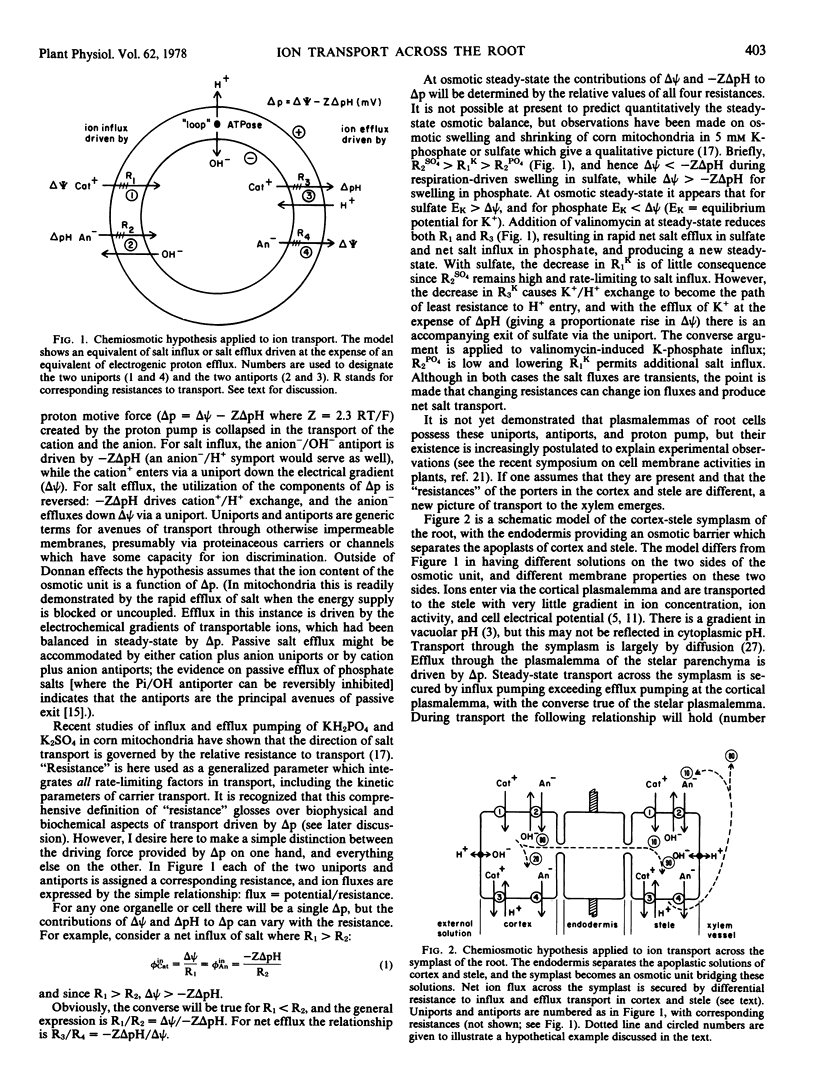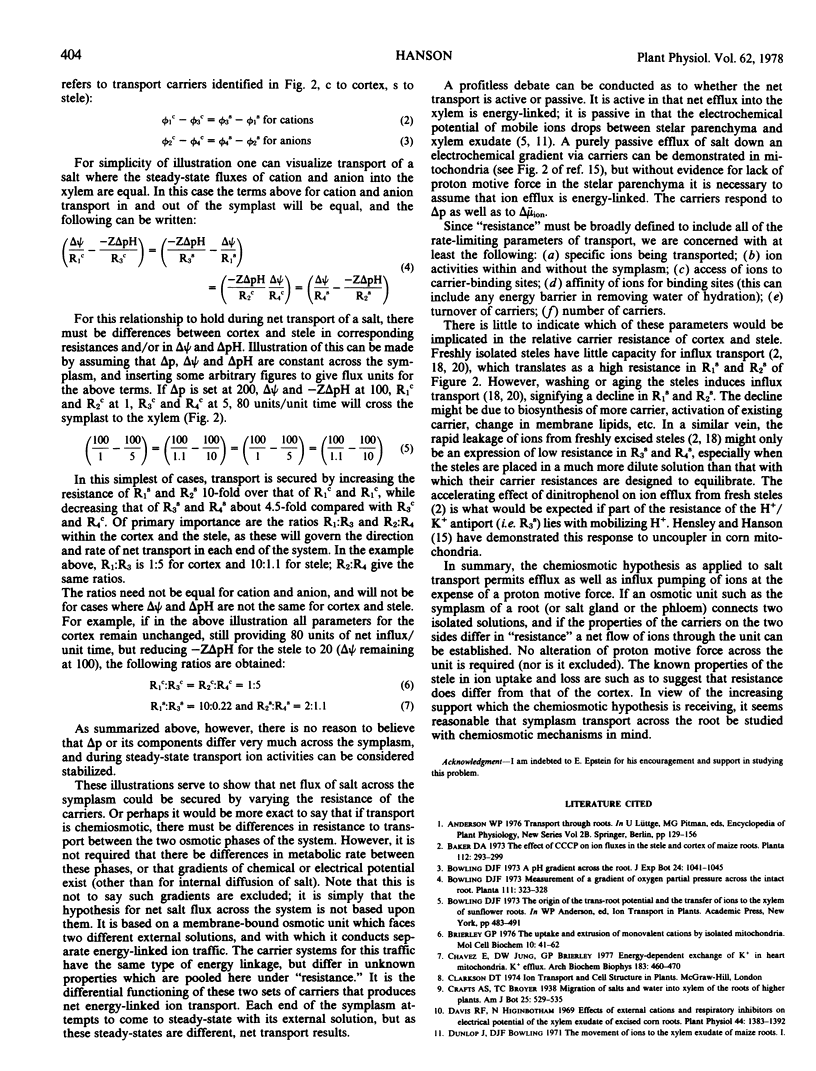Abstract
The evidence on how ions accumulated in the root symplasm are released to the xylem vessels is examined. It is suggested that Mitchell's chemiosmotic hypothesis as applied to ion transport might account for the process. A model based on this hypothesis shows the symplasm as an osmotic unit connecting two isolated solutions, but with no significant difference in proton motive force across the unit. If it is assumed that the resistance to transport by plasmalemma uniports and antiports differs in the cortical and stelar ends of the symplasm, the model will provide for an influx of ions to the xylem. The reported properties of isolated steles suggests that the porters (carriers) do have properties in accord with the model.
Full text
PDF



Selected References
These references are in PubMed. This may not be the complete list of references from this article.
- Brierley G. P. The uptake and extrusion of monovalent cations by isolated heart mitochondria. Mol Cell Biochem. 1976 Jan 31;10(1):41–63. doi: 10.1007/BF01731680. [DOI] [PubMed] [Google Scholar]
- Chávez E., Jung D. W., Brierley G. P. Energy-dependence exchange of K+ in heart mitochondria. K+ efflux. Arch Biochem Biophys. 1977 Oct;183(2):460–470. doi: 10.1016/0003-9861(77)90381-2. [DOI] [PubMed] [Google Scholar]
- Davis R. F., Higinbotham N. Effects of external cations and respiratory inhibitors on electrical potential of the xylem exudate of excised corn roots. Plant Physiol. 1969 Oct;44(10):1383–1392. doi: 10.1104/pp.44.10.1383. [DOI] [PMC free article] [PubMed] [Google Scholar]
- Fiscus E. L., Kramer P. J. Radial movement of oxygen in plant roots. Plant Physiol. 1970 Jun;45(6):667–669. doi: 10.1104/pp.45.6.667. [DOI] [PMC free article] [PubMed] [Google Scholar]
- Hensley J. R., Hanson J. B. The action of valinomycin in uncoupling corn mitochondria. Plant Physiol. 1975 Jul;56(1):13–18. doi: 10.1104/pp.56.1.13. [DOI] [PMC free article] [PubMed] [Google Scholar]
- Jung D. W., Chávez E., Brierley G. P. Energy-dependent exchange of K+ in heart mitochondria. K+ influx. Arch Biochem Biophys. 1977 Oct;183(2):452–459. doi: 10.1016/0003-9861(77)90380-0. [DOI] [PubMed] [Google Scholar]
- Laties G. G., Budd K. THE DEVELOPMENT OF DIFFERENTIAL PERMEABILITY IN ISOLATED STELES OF CORN ROOTS. Proc Natl Acad Sci U S A. 1964 Aug;52(2):462–469. doi: 10.1073/pnas.52.2.462. [DOI] [PMC free article] [PubMed] [Google Scholar]
- Mitchell P., Moyle J. Translocation of some anions cations and acids in rat liver mitochondria. Eur J Biochem. 1969 Jun;9(2):149–155. doi: 10.1111/j.1432-1033.1969.tb00588.x. [DOI] [PubMed] [Google Scholar]
- Tyree M. T. The symplast concept. A general theory of symplastic transport according to the thermodynamics of irreversible processes. J Theor Biol. 1970 Feb;26(2):181–214. doi: 10.1016/s0022-5193(70)80012-1. [DOI] [PubMed] [Google Scholar]
- Yu G. H., Kramer P. J. Radial transport of ions in roots. Plant Physiol. 1969 Aug;44(8):1095–1100. doi: 10.1104/pp.44.8.1095. [DOI] [PMC free article] [PubMed] [Google Scholar]


